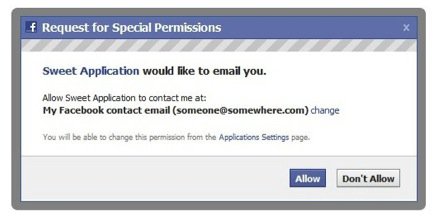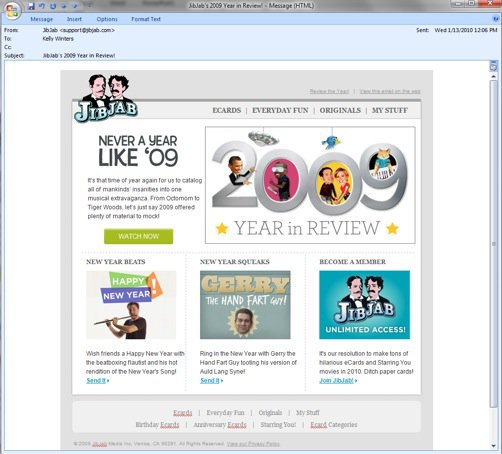
Big changes are coming to Facebook Platform. Today, Facebook is granting developers on Platform the ability to request (or require) users to hand over their email addresses so they they can send periodic messages directly to users. This doesn’t come as a surprise: Facebook first talked about these changes last October and has kept developers updated on the timing in its Developer Roadmap. But it’s a very, very big deal.
Before now, Facebook applications have used the notifications window (that slide up panel in the bottom right hand side of the screen) to engage users on a long term basis. Facebook is deprecating that functionality in the next thirty days. Now, developers will no longer be reliant on Facebook to serve as the gatekeeper for their communication with users (in other words, Facebook no longer “owns” the relationship with users). But this may not be good news to all developers.
When developers send a message to users through Facebook’s notifications window, there is really no way for the user to miss it: the notification icon gets a bright red badge, and your last few messages are displayed whenever you click on the icon (so if you initially miss one message, you’ll still see it a few days later). With Email, there’s no such urgency. Many people are already overwhelmed by the amount of Email they receive, so these messages could get lost in the shuffle. On the plus side for developers, they’ll no longer have to worry about Facebook’s messaging quotas (at least unless they get reported as spam).
To collect Email addresses, developers will prompt users through an extended permission box. Developers can mandate handing this information as part of the app installation process. Facebook users who are concerned about spam can elect to only share a proxied Email address, similar to the ones you can get on Craigslist.
Facebook says that LivingSocial has offered Email notifications for its Visual Bookshelf application for years, and that they drive 10% of the application’s traffic, with a high click-through rates of 5-12%.
Here’s a sample Email that can be sent from a developer:
